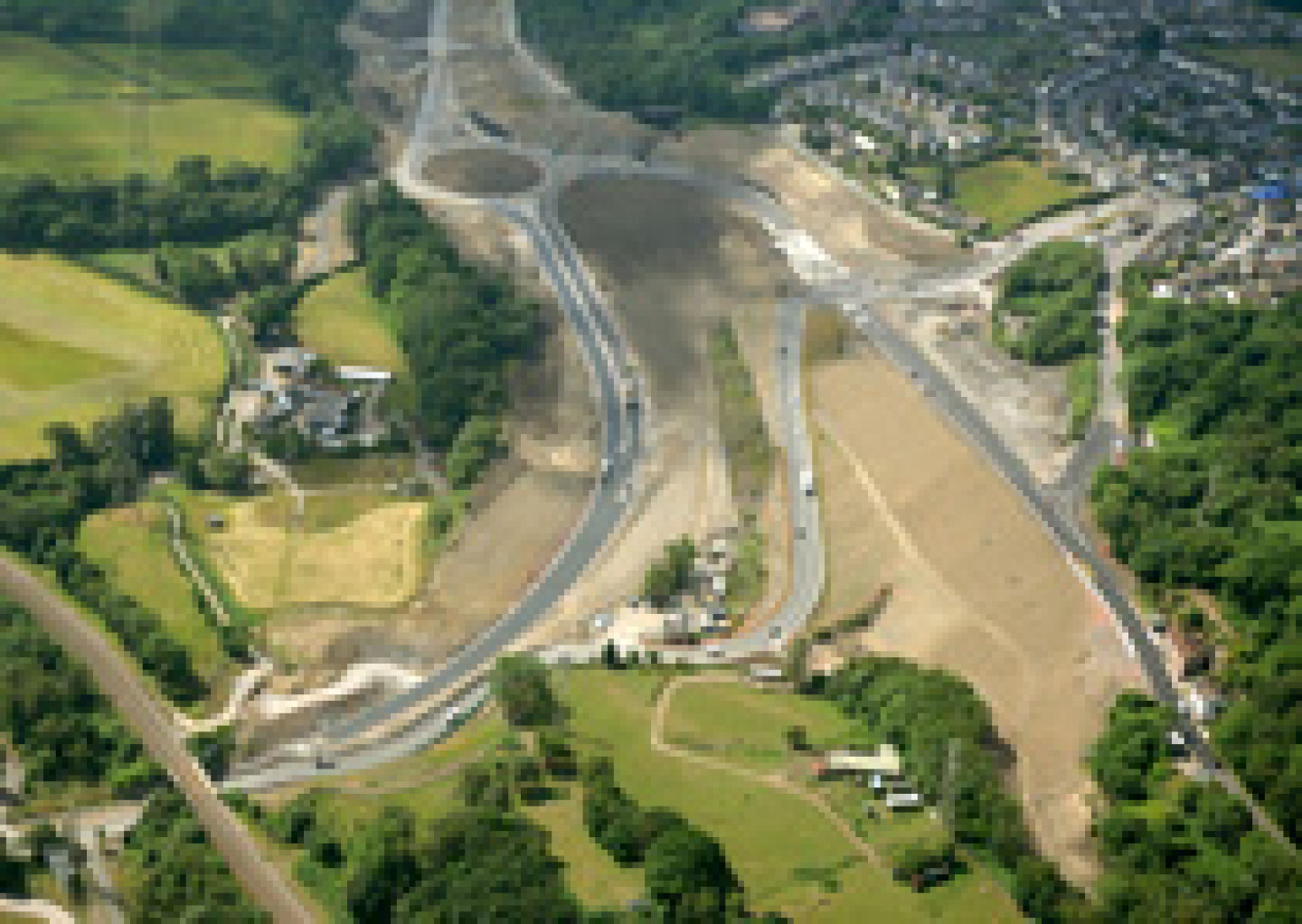A new 7 km bypass built by Costain at Church Village required careful planning to minimise its effect on the countryside and the local environment. Rhondda Cynon Taff Council needed to bypass Church Village to reduce traffic disruption on the A473, between Pontypridd and Talbot Green.
The challenges in managing surface water both from natural and developed features were considerable, including run-off from the surrounding hilly countryside, existing drainage from several disused railway installations and groundwater from disused mineshafts. If this had not been carefully diverted around the new road, it could have ponded, and created unplanned standing water or even undermined structures.
“One important problem with a new road like a bypass is the potential disruption to surface water flow in the area,” comments Costain’s Project Manager, John Lee. “The building of structures which block natural surface water flow lines across the landscape, or flow from existing construction like roads, has to be carefully planned.
“I have not used the Hydro Drop™ Shaft technique before, but it seems a simple and non-disruptive solution which avoided much greater expense.”
Simon Edwards, Principal Engineer, Water and Environment, for Atkins Limited, the consultant on the project adds: “We decided to divert the ground water under the new bypass along a culvert built over an old rail track bed. From there, the water had to descend around four metres to a small local stream bed and then into the River Taff. Uncontrolled, this drop of water would have scoured away the stream bed, and caused unacceptable environmental damage.
The design therefore incorporated a Hydro Vortex Drop™ Shaft. It is a single-shaft self-activating system with no moving parts and is designed to quietly and safely drop water or sewage from heights in a space-saving design.
“The maximum design flow was 1m3/sec through a 600mm pipe reducing to 450mm. By inducing a vortex at the lower end of the drop, the Hydro Vortex Drop™ shaft provides the energy dissipation which prevents excess flow force at the discharge.”
An alternative solution to the Hydro Drop™ Shaft had been to build a cascade to take the flow down over successive weirs.
“This would have involved considerable and expensive earthworks through the rail embankment,” pointed out John Lee. “Additionally, cutting into old rail ground structures can create all sorts of trouble as no-one knows what is in there, all the records had disappeared. It was much simpler to install the Drop™ Shaft and with less visual impact too.”
Equal care was paid to other environmental parameters, from the planting of 117,000 new trees and shrubs and using 300,000 tyres as part of the landfill to building three connecting bridges across the road for the use of local dormice, an endangered species.
Rhondda Cynon Taff Council granted planning permission in 2006 with a £90 million grant from the Welsh Assembly Government; the road was opened to traffic in Autumn 2010.
For more information about the Hydro Vortex Drop™ Shaft or any of its Water and Wastewater treatment products, please contact 01353 645700, email enquiries@hydro-international.co.uk or visit www.hydro-international.biz .
